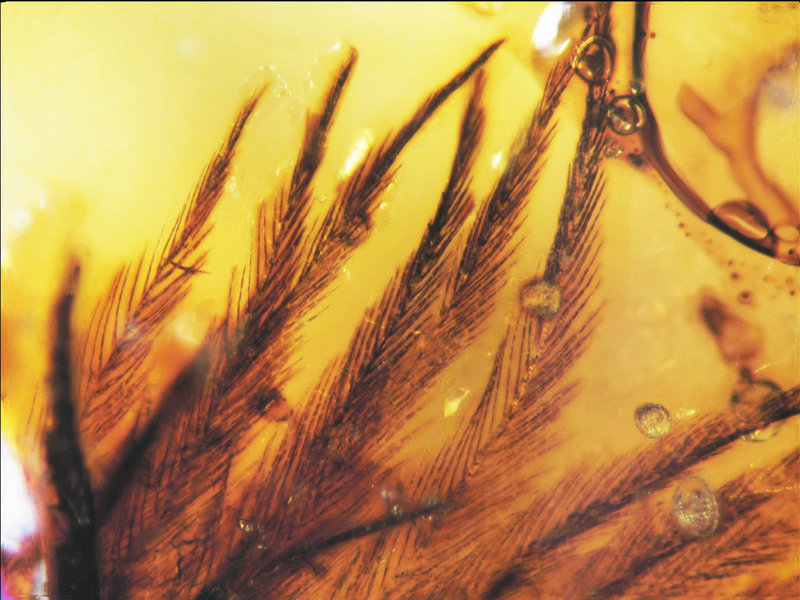WASHINGTON – In science fiction, amber preserved the DNA that allowed rebirth of dinosaurs in Jurassic Park. In real life, amber preserved feathers that provide a new image of what dinosaurs looked like.
“Now, instead of scaly animals portrayed as usually drab creatures, we have solid evidence for a fluffy colored past,” reported Mark A. Norell of the American Museum of Natural History in New York.
Examples of ancient feathers ranging from the simple to the complex are now being studied. They were preserved in amber found in western Canada, researchers led by Ryan C. McKellar of the University of Alberta report in today’s edition of the journal Science.
Amber, hardened tree resin, preserved a mixture of feathers from 70 million years ago. Other feathers contained in amber dating to 90 million years ago are less diverse.
Specimens include simple filament structures similar to the earliest feathers of non-flying dinosaurs — a form unknown in modern birds — and more complicated bird feathers “displaying pigmentation and adaptations for flight and diving,” the researchers reported.
The new discoveries indicate feathers continued to develop into modern form before the dinosaurs’ extinction, Norell said.
A separate report by Roy A. Wogelius of the University of Manchester, England, published online June 30 by Science, reports the finding of trace metals in feather fossils, suggesting their colors included black, brown and a reddish-brown.
“Despite many reports over the past decade of feathered dinosaurs and new birds from China, only now are we beginning to understand just how diverse feather types were” millions of years ago, Norell said.
Send questions/comments to the editors.



Success. Please wait for the page to reload. If the page does not reload within 5 seconds, please refresh the page.
Enter your email and password to access comments.
Hi, to comment on stories you must . This profile is in addition to your subscription and website login.
Already have a commenting profile? .
Invalid username/password.
Please check your email to confirm and complete your registration.
Only subscribers are eligible to post comments. Please subscribe or login first for digital access. Here’s why.
Use the form below to reset your password. When you've submitted your account email, we will send an email with a reset code.